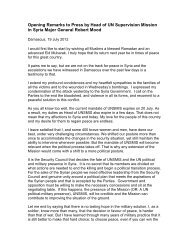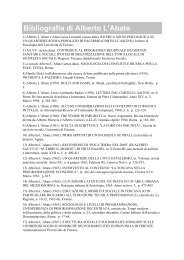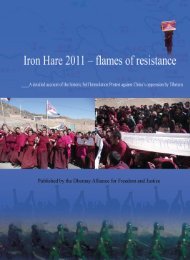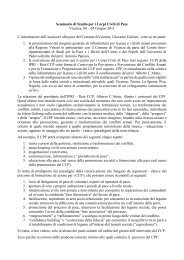- Page 1 and 2:
Volume 94 Number 885 Spring 2012Hum
- Page 3:
Volume 94 Number 885 Spring 2012Hum
- Page 7 and 8:
Volume 94 Number 885 Spring 2012EDI
- Page 9 and 10:
Volume 94 Number 885 Spring 2012the
- Page 11 and 12:
Volume 94 Number 885 Spring 2012adm
- Page 15 and 16:
Volume 94 Number 885 Spring 2012Int
- Page 17 and 18:
Volume 94 Number 885 Spring 2012I s
- Page 19 and 20:
Volume 94 Number 885 Spring 2012not
- Page 21 and 22:
Volume 94 Number 885 Spring 2012Bac
- Page 23 and 24:
Volume 94 Number 885 Spring 2012Ove
- Page 25 and 26:
Volume 94 Number 885 Spring 2012but
- Page 27 and 28:
Volume 94 Number 885 Spring 2012©
- Page 29 and 30:
Volume 94 Number 885 Spring 2012In
- Page 31 and 32:
Volume 94 Number 885 Spring 2012DEB
- Page 33 and 34:
Volume 94 Number 885 Spring 2012‘
- Page 35 and 36:
Volume 94 Number 885 Spring 2012han
- Page 37 and 38:
Volume 94 Number 885 Spring 2012‘
- Page 39 and 40:
Volume 94 Number 885 Spring 2012Eff
- Page 41 and 42:
Volume 94 Number 885 Spring 2012rej
- Page 43 and 44:
Volume 94 Number 885 Spring 2012sta
- Page 45 and 46:
Volume 94 Number 885 Spring 2012def
- Page 47 and 48:
Volume 94 Number 885 Spring 2012civ
- Page 49 and 50:
Volume 94 Number 885 Spring 2012ass
- Page 51 and 52:
Volume 94 Number 885 Spring 2012pre
- Page 53 and 54:
Volume 94 Number 885 Spring 2012Pre
- Page 55 and 56:
Volume 94 Number 885 Spring 2012The
- Page 57 and 58:
Volume 94 Number 885 Spring 2012the
- Page 59 and 60:
Volume 94 Number 885 Spring 2012Ben
- Page 61 and 62:
Volume 94 Number 885 Spring 2012fav
- Page 63 and 64:
Volume 94 Number 885 Spring 2012sug
- Page 65 and 66:
Volume 94 Number 885 Spring 2012cas
- Page 67 and 68:
Volume 94 Number 885 Spring 2012If
- Page 70 and 71:
Y. Arai-Takahashi - Preoccupied wit
- Page 72 and 73:
Y. Arai-Takahashi - Preoccupied wit
- Page 74 and 75:
Y. Arai-Takahashi - Preoccupied wit
- Page 76 and 77:
Y. Arai-Takahashi - Preoccupied wit
- Page 78 and 79:
Y. Arai-Takahashi - Preoccupied wit
- Page 80 and 81:
Y. Arai-Takahashi - Preoccupied wit
- Page 82 and 83:
Y. Arai-Takahashi - Preoccupied wit
- Page 84 and 85:
R. Giladi - A different sense of hu
- Page 86 and 87:
R. Giladi - A different sense of hu
- Page 88 and 89:
R. Giladi - A different sense of hu
- Page 90 and 91:
R. Giladi - A different sense of hu
- Page 92 and 93:
R. Giladi - A different sense of hu
- Page 94 and 95:
R. Giladi - A different sense of hu
- Page 96 and 97:
R. Giladi - A different sense of hu
- Page 98 and 99:
R. Giladi - A different sense of hu
- Page 100 and 101:
R. Giladi - A different sense of hu
- Page 102 and 103:
R. Giladi - A different sense of hu
- Page 104 and 105:
R. Giladi - A different sense of hu
- Page 106 and 107:
R. Giladi - A different sense of hu
- Page 108 and 109:
R. Giladi - A different sense of hu
- Page 110 and 111:
R. Giladi - A different sense of hu
- Page 112 and 113:
R. Giladi - A different sense of hu
- Page 114 and 115:
R. Giladi - A different sense of hu
- Page 116 and 117:
R. Giladi - A different sense of hu
- Page 118 and 119:
R. Giladi - A different sense of hu
- Page 120 and 121:
A. Becker - The dilemmas of protect
- Page 122 and 123:
A. Becker - The dilemmas of protect
- Page 124 and 125:
A. Becker - The dilemmas of protect
- Page 126 and 127:
A. Becker - The dilemmas of protect
- Page 128 and 129:
A. Becker - The dilemmas of protect
- Page 130 and 131:
A. Becker - The dilemmas of protect
- Page 132 and 133:
A. Becker - The dilemmas of protect
- Page 134 and 135:
A. Becker - The dilemmas of protect
- Page 136 and 137:
T. Ferraro - Determining the beginn
- Page 138 and 139:
T. Ferraro - Determining the beginn
- Page 140 and 141:
T. Ferraro - Determining the beginn
- Page 142 and 143:
T. Ferraro - Determining the beginn
- Page 144 and 145:
T. Ferraro - Determining the beginn
- Page 146 and 147:
T. Ferraro - Determining the beginn
- Page 148 and 149:
T. Ferraro - Determining the beginn
- Page 150 and 151:
T. Ferraro - Determining the beginn
- Page 152 and 153:
T. Ferraro - Determining the beginn
- Page 154 and 155:
T. Ferraro - Determining the beginn
- Page 156 and 157:
T. Ferraro - Determining the beginn
- Page 158 and 159:
T. Ferraro - Determining the beginn
- Page 160 and 161:
T. Ferraro - Determining the beginn
- Page 162 and 163:
T. Ferraro - Determining the beginn
- Page 164 and 165:
T. Ferraro - Determining the beginn
- Page 167 and 168:
Volume 94 Number 885 Spring 2012The
- Page 169 and 170:
Volume 94 Number 885 Spring 2012Pro
- Page 171 and 172:
Volume 94 Number 885 Spring 2012dur
- Page 173 and 174:
Volume 94 Number 885 Spring 2012(UN
- Page 175 and 176:
Volume 94 Number 885 Spring 2012by
- Page 177 and 178:
Volume 94 Number 885 Spring 2012of
- Page 179 and 180:
Volume 94 Number 885 Spring 2012How
- Page 181 and 182:
Volume 94 Number 885 Spring 2012the
- Page 183 and 184:
Volume 94 Number 885 Spring 2012gov
- Page 185 and 186:
ידןVolume 94 Number 885 Spring 2
- Page 187 and 188:
Volume 94 Number 885 Spring 2012Art
- Page 189 and 190:
Volume 94 Number 885 Spring 2012ord
- Page 191 and 192:
Volume 94 Number 885 Spring 2012mee
- Page 193 and 194:
Volume 94 Number 885 Spring 2012Hav
- Page 195 and 196:
Volume 94 Number 885 Spring 2012and
- Page 197 and 198:
Volume 94 Number 885 Spring 2012sec
- Page 199 and 200:
Volume 94 Number 885 Spring 2012whe
- Page 201 and 202:
Volume 94 Number 885 Spring 2012wit
- Page 203 and 204:
Volume 94 Number 885 Spring 2012rel
- Page 205 and 206:
Volume 94 Number 885 Spring 2012of
- Page 207:
Volume 94 Number 885 Spring 2012exc
- Page 210 and 211:
D. Kretzmer - The law of belligeren
- Page 212 and 213:
D. Kretzmer - The law of belligeren
- Page 214 and 215:
D. Kretzmer - The law of belligeren
- Page 216 and 217:
D. Kretzmer - The law of belligeren
- Page 218 and 219:
D. Kretzmer - The law of belligeren
- Page 220 and 221:
D. Kretzmer - The law of belligeren
- Page 222 and 223:
D. Kretzmer - The law of belligeren
- Page 224 and 225:
D. Kretzmer - The law of belligeren
- Page 226 and 227:
D. Kretzmer - The law of belligeren
- Page 228 and 229:
D. Kretzmer - The law of belligeren
- Page 230 and 231:
D. Kretzmer - The law of belligeren
- Page 232 and 233:
D. Kretzmer - The law of belligeren
- Page 234 and 235:
D. Kretzmer - The law of belligeren
- Page 236 and 237:
D. Kretzmer - The law of belligeren
- Page 238 and 239:
D. Kretzmer - The law of belligeren
- Page 240 and 241:
G. H. Fox - Transformative occupati
- Page 242 and 243:
G. H. Fox - Transformative occupati
- Page 244 and 245:
G. H. Fox - Transformative occupati
- Page 246 and 247:
G. H. Fox - Transformative occupati
- Page 248 and 249:
G. H. Fox - Transformative occupati
- Page 250 and 251:
G. H. Fox - Transformative occupati
- Page 252 and 253:
G. H. Fox - Transformative occupati
- Page 254 and 255:
G. H. Fox - Transformative occupati
- Page 256 and 257:
G. H. Fox - Transformative occupati
- Page 258 and 259:
G. H. Fox - Transformative occupati
- Page 260 and 261:
G. H. Fox - Transformative occupati
- Page 262 and 263:
G. H. Fox - Transformative occupati
- Page 264 and 265:
G. H. Fox - Transformative occupati
- Page 266 and 267: G. H. Fox - Transformative occupati
- Page 268 and 269: G. H. Fox - Transformative occupati
- Page 270 and 271: K. Watkin - Use of force during occ
- Page 272 and 273: K. Watkin - Use of force during occ
- Page 274 and 275: K. Watkin - Use of force during occ
- Page 276 and 277: K. Watkin - Use of force during occ
- Page 278 and 279: K. Watkin - Use of force during occ
- Page 280 and 281: K. Watkin - Use of force during occ
- Page 282 and 283: K. Watkin - Use of force during occ
- Page 284 and 285: K. Watkin - Use of force during occ
- Page 286 and 287: K. Watkin - Use of force during occ
- Page 288 and 289: K. Watkin - Use of force during occ
- Page 290 and 291: K. Watkin - Use of force during occ
- Page 292 and 293: K. Watkin - Use of force during occ
- Page 294 and 295: K. Watkin - Use of force during occ
- Page 296 and 297: K. Watkin - Use of force during occ
- Page 298 and 299: K. Watkin - Use of force during occ
- Page 300 and 301: K. Watkin - Use of force during occ
- Page 302 and 303: K. Watkin - Use of force during occ
- Page 304 and 305: K. Watkin - Use of force during occ
- Page 306 and 307: K. Watkin - Use of force during occ
- Page 308 and 309: K. Watkin - Use of force during occ
- Page 310 and 311: K. Watkin - Use of force during occ
- Page 312 and 313: K. Watkin - Use of force during occ
- Page 314 and 315: K. Watkin - Use of force during occ
- Page 319 and 320: Volume 94 Number 885 Spring 2012Hum
- Page 321 and 322: Volume 94 Number 885 Spring 2012app
- Page 323 and 324: Volume 94 Number 885 Spring 2012a s
- Page 325 and 326: Volume 94 Number 885 Spring 2012of
- Page 327 and 328: Volume 94 Number 885 Spring 2012In
- Page 329 and 330: Volume 94 Number 885 Spring 2012ens
- Page 331 and 332: Volume 94 Number 885 Spring 2012The
- Page 333 and 334: Volume 94 Number 885 Spring 2012sup
- Page 335 and 336: Volume 94 Number 885 Spring 2012cha
- Page 337 and 338: Volume 94 Number 885 Spring 2012Occ
- Page 339: Volume 94 Number 885 Spring 2012sou
- Page 342 and 343: M. R. Hover - The occupation of Ira
- Page 344 and 345: M. R. Hover - The occupation of Ira
- Page 346 and 347: M. R. Hover - The occupation of Ira
- Page 348 and 349: M. R. Hover - The occupation of Ira
- Page 350 and 351: Reports and Documents31st Internati
- Page 352 and 353: Reports and DocumentsIHL, but also
- Page 354 and 355: Reports and DocumentsWhat has been
- Page 356 and 357: Reports and Documentsand addressing
- Page 358 and 359: Reports and DocumentsResolution 4Re
- Page 360 and 361: Reports and Documentsnuclear weapon
- Page 362 and 363: Reports and DocumentsResolution 2 o
- Page 364 and 365: Reports and Documentsand which prov
- Page 366 and 367:
Reports and Documentsreaffirming in
- Page 368 and 369:
Reports and DocumentsResolution 5 o
- Page 370 and 371:
Reports and DocumentsResolution 6 o
- Page 372 and 373:
Reports and DocumentsResolution 7 o
- Page 374 and 375:
Reports and DocumentsThe ICRC’s R
- Page 376 and 377:
Reports and Documentsapplication of
- Page 378 and 379:
Reports and DocumentsResolution 8 o
- Page 380 and 381:
Reports and DocumentsCommission D:
- Page 382 and 383:
Reports and Documentsrecalling the
- Page 384 and 385:
Reports and DocumentsResolution 2 o
- Page 386 and 387:
Reports and Documentssteps to prote
- Page 388 and 389:
Reports and Documentsc) Protection
- Page 390 and 391:
Reports and Documentsprotective mea
- Page 392 and 393:
Reports and Documentsinto account t
- Page 394 and 395:
Reports and DocumentsResolution 3 o
- Page 396 and 397:
Reports and Documentson Drugs and C
- Page 398 and 399:
Reports and DocumentsSocieties in v
- Page 400 and 401:
Reports and Documentsnational law a
- Page 402 and 403:
Reports and Documentsuse of the dis
- Page 404 and 405:
Reports and Documents10. calls upon
- Page 406 and 407:
Reports and Documentspartnership th
- Page 408 and 409:
Reports and Documents5) take the le
- Page 410 and 411:
Reports and Documentsreduction at t
- Page 412 and 413:
Reports and DocumentsAddressing reg
- Page 414 and 415:
Reports and DocumentsResolution 8 o
- Page 416 and 417:
Reports and Documents5. decides tha
- Page 419 and 420:
Volume 94 Number 885 Spring 2012REP
- Page 421 and 422:
Conventions States Ratification dat
- Page 423 and 424:
Volume 94 Number 885 Spring 2012Rat
- Page 425 and 426:
Volume 94 Number 885 Spring 2012mod
- Page 427 and 428:
Volume 94 Number 885 Spring 2012Kos
- Page 429 and 430:
Volume 94 Number 885 Spring 2012The
- Page 431 and 432:
Volume 94 Number 885 Spring 2012adv
- Page 433 and 434:
Volume 94 Number 885 Spring 2012joi
- Page 435 and 436:
Volume 94 Number 885 Spring 2012mad
- Page 437 and 438:
Volume 94 Number 885 Spring 2012sta
- Page 439 and 440:
Volume 94 Number 885 Spring 2012BOO
- Page 441 and 442:
Volume 94 Number 885 Spring 2012Tra
- Page 443 and 444:
Volume 94 Number 885 Spring 2012Env
- Page 445 and 446:
Volume 94 Number 885 Spring 2012Hum
- Page 447 and 448:
Volume 94 Number 885 Spring 2012Was
- Page 449 and 450:
Volume 94 Number 885 Spring 2012àl
- Page 451 and 452:
Volume 94 Number 885 Spring 2012Pro
- Page 453 and 454:
Volume 94 Number 885 Spring 2012Ter
- Page 455:
OccupationInterview with Raja Sheha













